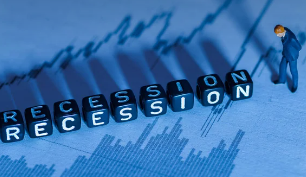
Emerging Markets | Europe | FX | Global | UK | US

Emerging Markets | Europe | FX | Global | UK | US
This article is only available to Macro Hive subscribers. Sign-up to receive world-class macro analysis with a daily curated newsletter, podcast, original content from award-winning researchers, cross market strategy, equity insights, trade ideas, crypto flow frameworks, academic paper summaries, explanation and analysis of market-moving events, community investor chat room, and more.
It seems funny to write about rising global recession risks right after Chinese and US manufacturing PMIs both beat expectations. Yet levels are hardly inspiring, and a multitude of factors spell trouble for the global economy.
Specifically, these past few weeks have seen material developments in global markets, with US long-term nominal and real yields hitting multi-year highs and oil prices trading near $95pb, now up 35% from this year’s low in March.
In early September, I fleshed out my baseline view of muted but not collapsing global growth (including range trading in equities and a directionless dollar). However, it now appears to me that recession risks are rising rapidly. To clarify: I refer to the global outlook as we approach 2024 – not just the US, where better growth and fiscal policy may trigger yet another round of US exceptionalism.
Nominal and real 10Y yields have reached their highest since 2007, while the cumulative changes over the last one and two years have been excruciatingly large (e.g., +320bps real yields since September 2021). This is bound to impede consumption and investment decisions, not just in the US but more broadly, especially amid anaemic global growth and faltering world trade (see below).

Consumers were able to weather the impact of higher prices/rates by drawing on savings they accumulated during the pandemic. However, these savings are now being depleted.
Although the estimates of excess savings vary, a reasonable conclusion would be that between 70% and 100% have already been used. The range may seem wide; but since yields and inflation are unlikely to fall back to pre-pandemic levels in the next 3-6 months, I suspect the main implication revolves around timing rather than the direction of travel.

As if inflation and higher yields were not enough, the global economy must now contend with soaring oil prices. As I recently argued, this is supply-side driven, and its disconnect with underlying demand threatens to wreak havoc in markets and the world economy. It is not currently at extreme levels, but it is adding to a multitude of demand-destruction drivers.

Moreover, world trade is running dangerously low. It is contracting by 3.2% YoY – the largest decrease since August 2020. This suggests a higher hurdle for economies to export their way out of a slowdown/recession or the emergence of one.
And while there has been some hype recently over China’s PMI rebound above the breakeven level of 50, it will require much more to change the trajectory of world trade growth. And so far, Chinese authorities seem unwilling to pursue substantial stimulus.

One can find pockets of investor angst (see for example the switch in correlations between oil prices and the dollar). Yet broader measures of risk sentiment remain sanguine: the VIX rose in September, but at 18% it hardly flashes any alarming signal; and CFTC positioning in S&P500 shows investors are closing equity shorts. Plenty of people buy into the soft-landing story. It may materialize, but the confluence of above drivers make me very nervous. Recession risks have increased, and this time China will not bail out the world.
So my two cents are:
Spring sale - Prime Membership only £3 for 3 months! Get trade ideas and macro insights now
Your subscription has been successfully canceled.
Discount Applied - Your subscription has now updated with Coupon and from next payment Discount will be applied.